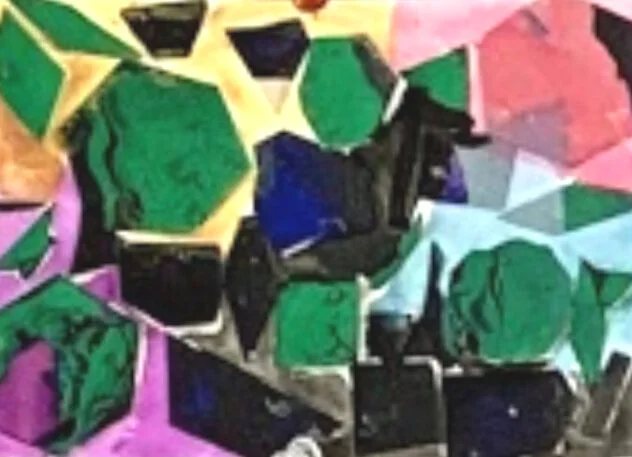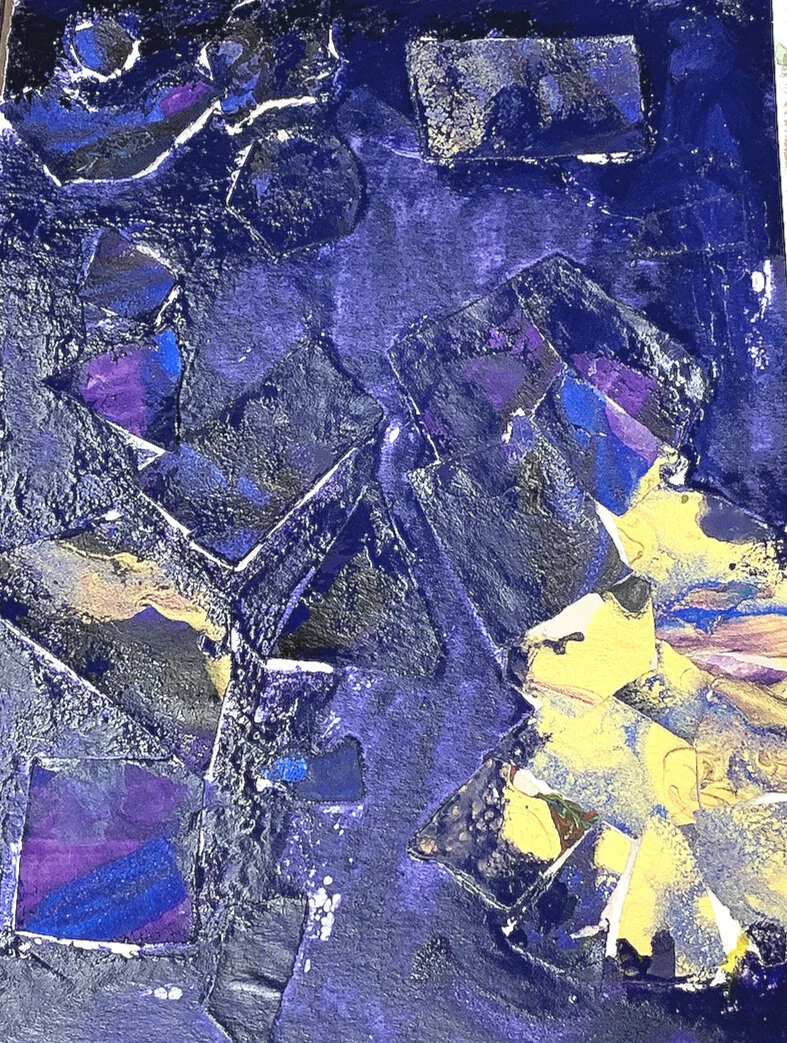Name of Project: Paint Collages inspired by Jack Whitten: PART 1/3
Teacher: Lula
Age or Grade Level: Prepared for 3rd grade
Visual Arts Content / Standards
MN Arts Standard 3501.0820
Subpart 1a - Foundations:
The student will use foundational knowledge and skills while responding to, creating, and presenting artistic work.
Subpart 5b - Connect:
The student will understand that artistic works influence and are influenced by personal, societal, cultural, and historical contexts, including the contributions of Minnesota American Indian tribes and communities.
National Core Arts Standard:
Relate artistic ideas and works with societal, cultural and historical context to deepen understanding.
Overview of Project
This will be the first part of a 3-part lesson series investigating the life and work of renowned painter Jack Whitten. We will explore his involvement in the Civil Rights movement of the 1960s, his work as an artist in New York City, and his famous break from traditional painting techniques to collage work using hardened paint.
This week, in Lesson 1, I will present a slideshow to students about Whitten’s life and work, from his childhood to his Black Monolith series. We will look at his works and discuss what emotions we feel when we look at them. We will discuss what larger forms we see, then zoom in and observe what small shapes collage together to comprise the whole painting. We will compare a photograph of Muhammad Ali with Whitten’s portrait of Muhammad Ali to introduce the idea of representation vs. abstraction.
We will create an acrylic pour painting, which will harden over the next two weeks. We will notice the colors we have chosen and how they look next to each other.
“Big Ideas”/ Essential Question(s)
How can small shapes make up a big picture? Why do we look for smaller shapes?
How is Jack Whitten’s work influenced by his experience fighting for Civil Rights in the 1960s?
What emotions do we feel when seeing and making political work?
What happens when we combine colors? How can we create a color-unified composition?
What is abstraction? Why do we use it?
Student Outcome Objectives
Students will:
1. Learn about Jack Whitten’s life and work
2. Be able to explain the difference between abstract work and representational work, and demonstrate understanding of why artists use abstraction.
Prior Knowledge
Students recently were taught about the Civil Rights movement of the 1960s. This will allow us to utilize language like civil rights, racism, segregation, protest and activism to contextualize Jack Whitten’s involvement in the movement and how his work was influenced by growing up in segregated Alabama.
Examples of Artwork
Here is my slideshow with Whitten’s work included, feel free to download and use it:
Assessment
Ask questions like, “What do you feel when you’re making this?” “Where is your mind wandering to while you’re pouring this paint?” “How do these colors make you feel?” to confirm the goal of abstraction as expressing emotions/ideas through art. We will compare Whitten’s abstract work to photographs and students will explain the difference between abstract and representational.
Materials
Large paper for pouring paint onto
Paint ingredients (paint must be prepped ahead of time to marble when it’s poured):
3 parts Acrylic paint, tempera can work too
1 part Elmers Liquid Glue
Isopropyl alcohol to thin the mixture
Cups & Sticks to stir
Teacher Reflection
Word of advice to future educators of this lesson: the paint pour takes longer than expected (I had planned 10 minutes of pouring but it took us almost 30) and you will need more paint mixture than you expect, about a dixie cup full for each child. This is a no-brush painting activity!!! Kids move the paper around to guide the paint. Make sure to have wet wipes ready & ask children to roll up sleeves first.
Students manuvering the paint around their papers by tilting the paper up and down, side to side.












